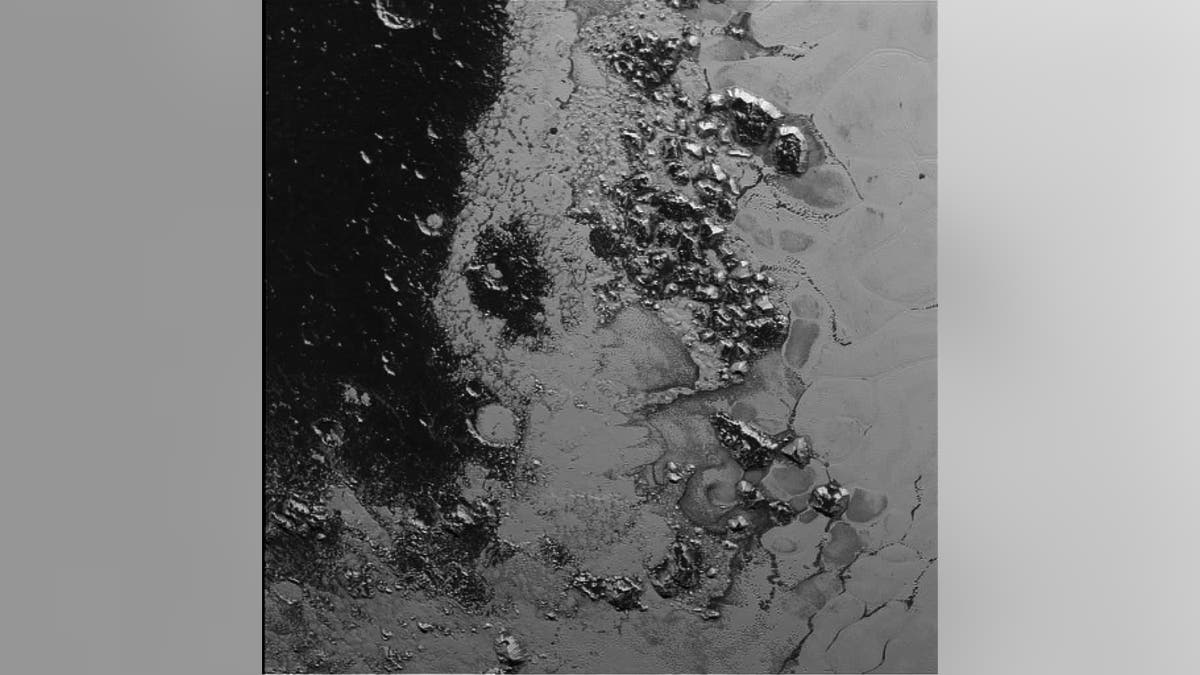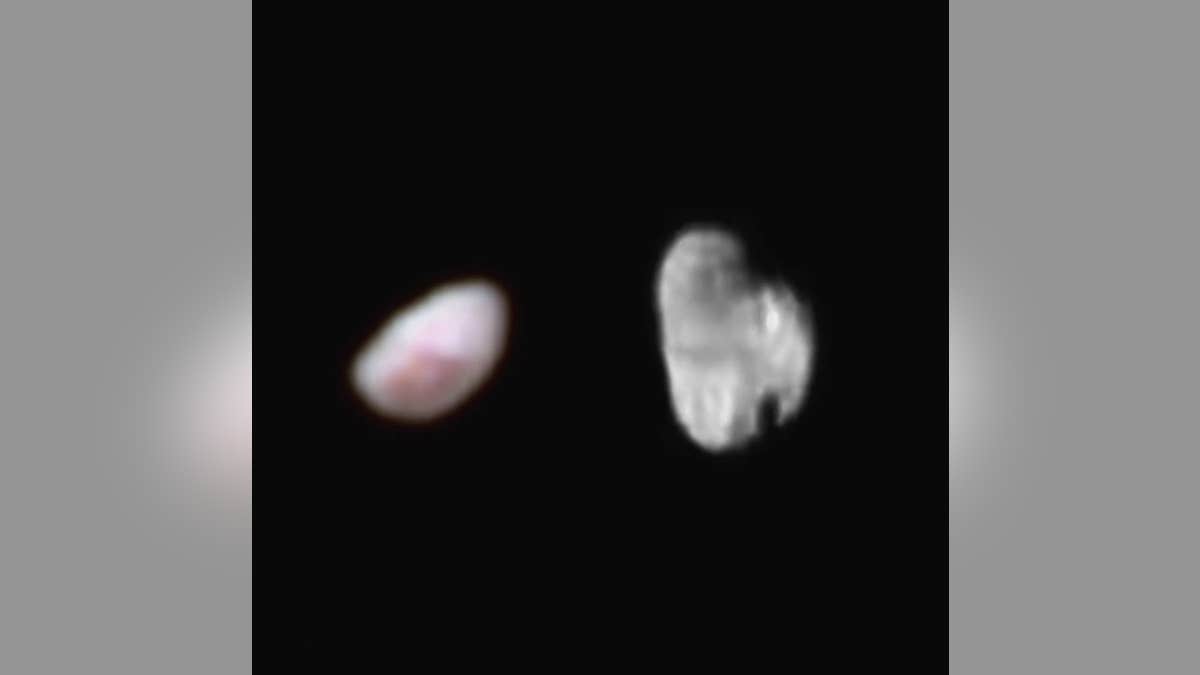
Image acquired by New Horizons’ Long Range Reconnaissance Imager (LORRI) on July 14, 2015 from a distance of 48,000 miles and sent back to Earth on July 20. (NASA/JHUAPL/SWRI)
A new image from the New Horizons spacecraft’s Pluto flyby has revealed a second mountain range within a heart-shaped region on the dwarf planet’s surface.
The range lies near the southwestern margin of the heart-shaped area dubbed “Tombaugh Regio” (Tombaugh Region) by scientists. Last week NASA released its first closeup image of an area near Pluto’s equator, which contains a range of mountains rising as high as 11,000 feet.
Related: NASA releases first Pluto flyby images
The latest Pluto image, which was released on Tuesday, shows another range, estimated to be about one-half mile to one mile high, about the same height as the Appalachian Mountains.
“Pluto’s icy mountains have company,” explained NASA, in a statement. “NASA’s New Horizons mission has discovered a new, apparently less lofty mountain range on the lower-left edge of Pluto’s best known feature, the bright, heart-shaped region named Tombaugh Regio.”
Related: Stunning NASA image reveals Pluto’s icy plains
The new range is just west of the region within Pluto’s heart called Sputnik Planum (Sputnik Plain), NASA said.

Pluto’s moon Nix (left), shown here in enhanced color as imaged by the New Horizons Ralph instrument, has a reddish spot that has attracted the interest of mission scientists. The data were obtained on the morning of July 14, 2015, and received on the ground on July 18. (NASA/JHUAPL/SWRI)
The agency also released a new image of Pluto’s moons Nix and Hydra. NASA noted that New Horizons’ first color image of Nix, in which colors have been enhanced, reveals an intriguing region, which is estimated to be 26 miles long and 22 miles wide.
Related: NASA releases closeup image of Pluto’s moon Charon
“Additional compositional data has already been taken of Nix, but is not yet downlinked. It will tell us why this region is redder than its surroundings,” said mission scientist Carly Howett of the Southwest Research Institute, in a statement. “This observation is so tantalizing, I’m finding it hard to be patient for more Nix data to be downlinked,” she added.
Members of NASA’s New Horizons team will be holding a science update on July 24 to reveal new images and discuss the latest results from the spacecraft’s historic July 14 flyby.
